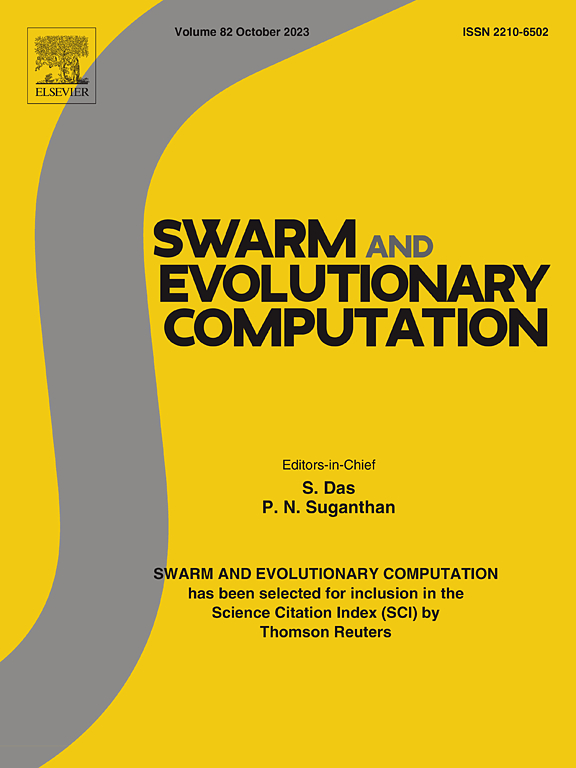A systematic review of metaheuristics-based and machine learning-driven intrusion detection systems in IoT
IF 8.2
1区 计算机科学
Q1 COMPUTER SCIENCE, ARTIFICIAL INTELLIGENCE
引用次数: 0
Abstract
The widespread adoption of the Internet of Things (IoT) has raised a new challenge for developers since it is prone to known and unknown cyberattacks due to its heterogeneity, flexibility, and close connectivity. To defend against such security breaches, researchers have focused on building sophisticated intrusion detection systems (IDSs) using machine learning (ML) techniques. Although these algorithms notably improve detection performance, they require excessive computing power and resources, which are crucial issues in IoT networks considering the recent trends of decentralized data processing and computing systems. Consequently, many optimization techniques have been incorporated with these ML models. Specifically, a special category of optimizer adopted from the behavior of living creatures and different aspects of natural phenomena, known as metaheuristic algorithms, has been a central focus in recent years and brought about remarkable results. Considering this vital significance, we present a comprehensive and systematic review of various applications of metaheuristics algorithms in developing a machine learning-based IDS, especially for IoT. A significant contribution of this study is the discovery of hidden correlations between these optimization techniques and machine learning models integrated with state-of-the-art IoT-IDSs. In addition, the effectiveness of these metaheuristic algorithms in different applications, such as feature selection, parameter or hyperparameter tuning, and hybrid usages are separately analyzed. Moreover, a taxonomy of existing IoT-IDSs is proposed. Furthermore, we investigate several critical issues related to such integration. Our extensive exploration ends with a discussion of promising optimization algorithms and technologies that can enhance the efficiency of IoT-IDSs.
物联网中基于元启发式和机器学习驱动的入侵检测系统的系统综述
物联网(IoT)的广泛采用给开发人员带来了新的挑战,因为它由于其异质性,灵活性和紧密连接而容易受到已知和未知的网络攻击。为了防御此类安全漏洞,研究人员专注于使用机器学习(ML)技术构建复杂的入侵检测系统(ids)。尽管这些算法显著提高了检测性能,但它们需要过多的计算能力和资源,考虑到分散数据处理和计算系统的最新趋势,这是物联网网络中的关键问题。因此,许多优化技术已与这些机器学习模型相结合。具体来说,从生物行为和自然现象的不同方面采用的一类特殊的优化器,被称为元启发式算法,近年来一直是人们关注的焦点,并取得了显著的成果。考虑到这一重要意义,我们对元启发式算法在开发基于机器学习的IDS中的各种应用进行了全面和系统的回顾,特别是针对物联网。本研究的一个重要贡献是发现了这些优化技术与与最先进的iot - ids集成的机器学习模型之间的隐藏相关性。此外,还分别分析了这些元启发式算法在特征选择、参数或超参数调优以及混合使用等不同应用中的有效性。此外,提出了现有物联网ids的分类。此外,我们还研究了与这种集成相关的几个关键问题。我们广泛的探索以讨论有前途的优化算法和技术结束,这些算法和技术可以提高物联网ids的效率。
本文章由计算机程序翻译,如有差异,请以英文原文为准。
求助全文
约1分钟内获得全文
求助全文
来源期刊

Swarm and Evolutionary Computation
COMPUTER SCIENCE, ARTIFICIAL INTELLIGENCEC-COMPUTER SCIENCE, THEORY & METHODS
CiteScore
16.00
自引率
12.00%
发文量
169
期刊介绍:
Swarm and Evolutionary Computation is a pioneering peer-reviewed journal focused on the latest research and advancements in nature-inspired intelligent computation using swarm and evolutionary algorithms. It covers theoretical, experimental, and practical aspects of these paradigms and their hybrids, promoting interdisciplinary research. The journal prioritizes the publication of high-quality, original articles that push the boundaries of evolutionary computation and swarm intelligence. Additionally, it welcomes survey papers on current topics and novel applications. Topics of interest include but are not limited to: Genetic Algorithms, and Genetic Programming, Evolution Strategies, and Evolutionary Programming, Differential Evolution, Artificial Immune Systems, Particle Swarms, Ant Colony, Bacterial Foraging, Artificial Bees, Fireflies Algorithm, Harmony Search, Artificial Life, Digital Organisms, Estimation of Distribution Algorithms, Stochastic Diffusion Search, Quantum Computing, Nano Computing, Membrane Computing, Human-centric Computing, Hybridization of Algorithms, Memetic Computing, Autonomic Computing, Self-organizing systems, Combinatorial, Discrete, Binary, Constrained, Multi-objective, Multi-modal, Dynamic, and Large-scale Optimization.
 求助内容:
求助内容: 应助结果提醒方式:
应助结果提醒方式:


